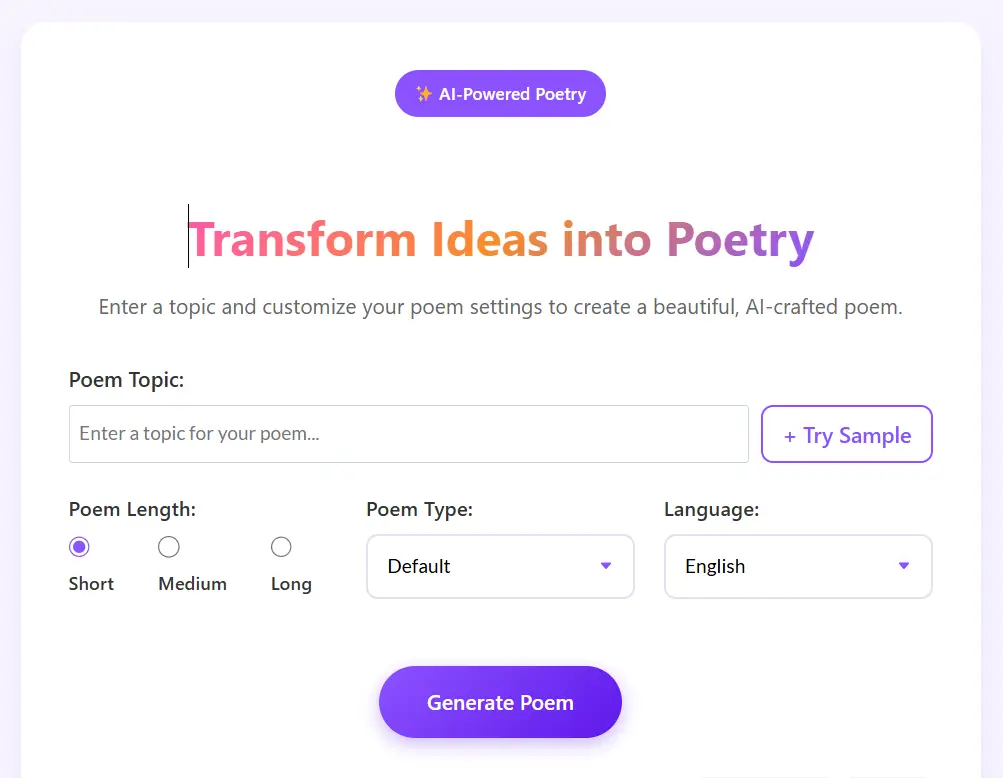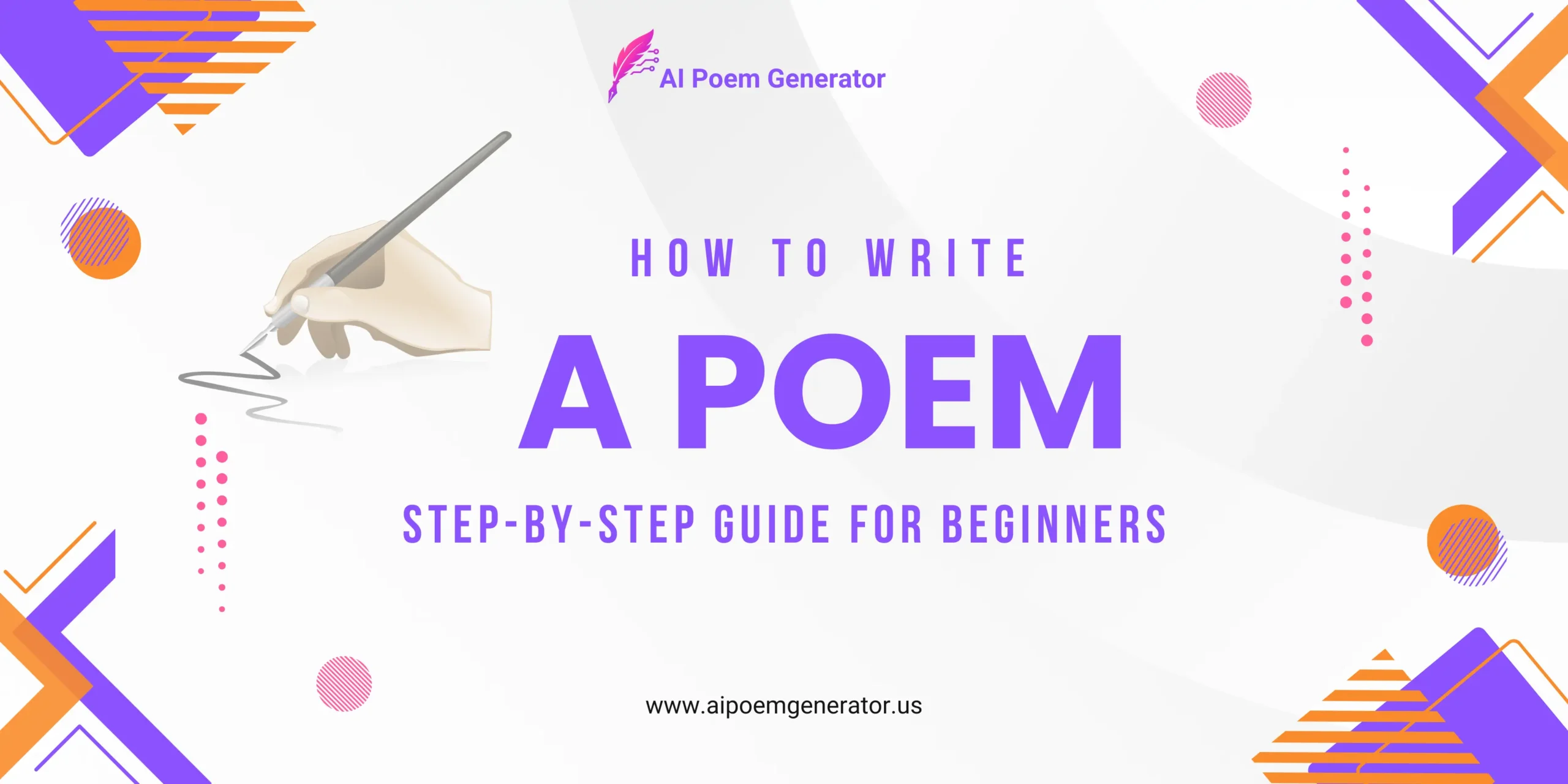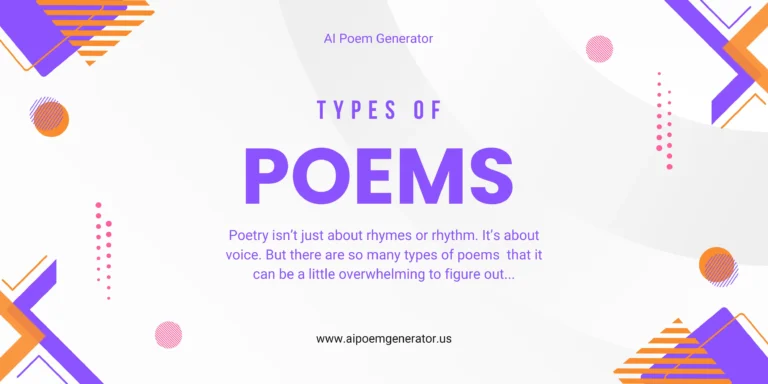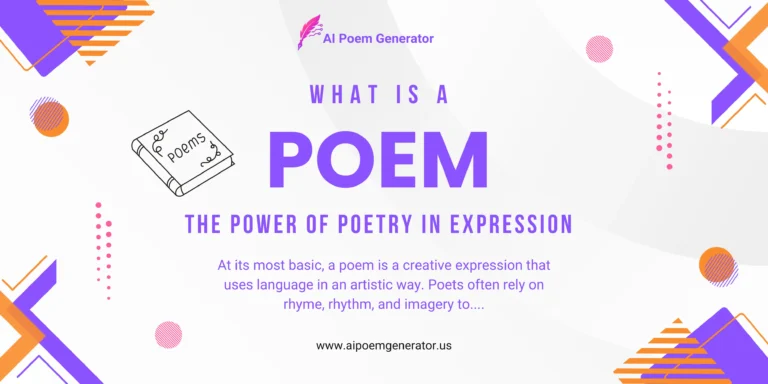How to Write a Poem: Step-by-Step Guide for Beginners
Writing a poem isn’t just about rhyming words together. It’s about capturing moments, emotions, and thoughts in a way that speaks directly to the reader.
No matter you’re an experienced poet or a beginner, writing poetry is a creative process that can be both enjoyable and rewarding. In this article, we’ll explore how to write a poem, step by step, so you can start expressing yourself through poetry.
What Is Poetry?
Poetry is more than just a form of writing it’s a unique way of expressing thoughts and emotions with condensed language, structure, and rhythm.
While poetry can be written in many styles and formats, its core purpose is to evoke feelings, create vivid imagery, or communicate complex ideas with few words. At its best, poetry creates an emotional connection between the writer and the reader.
But how do you get started? The key is understanding that poetry isn’t bound by rigid rules. Instead, it’s about personal expression, exploring language in creative ways, and finding your own voice.
Also Read: Types of Poems: A Complete Guide to Poetry Forms
How to Write a Poem
Step 1: Find Your Poetic Inspiration
Poetry starts with inspiration. It can come from anywhere: a walk in nature, a deep emotion, a fleeting thought, or a personal experience. Great poems often come from moments of introspection, where you feel a connection to your surroundings or emotions. Here are some ways to spark that creative fire:
Step 2: Choose Your Poetry Structure
Poems don’t have to follow a rigid structure, but understanding poetry forms can give your work direction. Here are some common ones:
Free Verse is a popular, modern style where the poem doesn’t follow a specific meter or rhyme scheme. Free verse allows for more flexibility and freedom.
A 14-line poem that typically follows a strict rhyme scheme and meter (often iambic pentameter) is Sonnet. It’s perfect for those who want to experiment with rhythm.
Haiku is atraditional Japanese form consisting of three lines with a 5-7-5 syllable count. It’s great for capturing moments or feelings in a concise way.
AABBA Rhyme Scheme is often used for limericks, this five-line format creates a playful or humorous tone.
We know this might feel like a lot of information to absorb all at once. To make things easier and help you choose the perfect poetry form, we recommend getting assistance from our AI poem writer. It’s designed to guide you in crafting your own unique poem, step by step.

Step 3: Play with Poetic Devices
Poetic devices add depth and emotion to your poem. These tools can enhance your writing by making it more vivid and engaging.
Metaphors and Similes: Compare two unlike things to make a point (e.g., “Her smile is like the sun”). Metaphors are direct comparisons, while similes use “like” or “as.”
Alliteration: Repeating the same sound at the beginning of words (e.g., “she sells sea shells”). It adds rhythm and musicality to your writing.
Onomatopoeia: Words that imitate sounds (e.g., “buzz,” “crash”). These words can make your poem more immersive.
Imagery: Using descriptive language to create mental pictures (e.g., “the scent of fresh rain on earth”). The more sensory details you include, the more engaging your poem will be.
Rhyme Scheme: Rhyming can bring a musical quality to your poem, making it more pleasing to the ear.
Symbolism: Objects, characters, or events in your poem can symbolize something greater, adding layers of meaning.
Step 4: Start Writing Your First Draft
Don’t worry about perfection in your first draft. The goal here is to get your thoughts down on paper without overthinking them. This is often referred to as free drafting where you allow your creativity to flow without restraint. Your first draft is just a starting point. You’ll have plenty of time to refine it later.
Write down whatever comes to mind. Let your ideas build on each other. If you get stuck, don’t stress. Just keep writing, even if it feels like you’re writing nonsense. Sometimes, the best ideas come when you least expect them.
As mentioned earlier, if you need a little extra help connecting your ideas and refining your drafts, our AI Poem Generator is here to assist. Use it to turn your thoughts into polished poetry, just like a pro.
Step 5: Revise and Refine Your Poem
Once you have a draft, the real work begins. This is when the poetic process truly comes alive. The key here is to be self-editing critically reviewing your work to see where improvements can be made. Look for places where your language can be more vivid, your rhythm more consistent, or your imagery stronger.
Here are some tips for refining your poem:
Read Aloud: Poetry is about sound as much as it is about meaning. Reading your poem aloud will help you catch awkward phrasing or mismatched rhythm.
Cut Unnecessary Words: Sometimes less is more. Look for words that don’t add value to the poem and remove them.
Check Your Structure: Make sure your poem flows logically. If it feels like a jumble of thoughts, consider rearranging the lines or stanzas for better coherence.
Get Feedback: Ask a friend or fellow writer for feedback. A fresh set of eyes can spot things you might have missed.
Step 6: Perfect Your Poem’s Tone and Mood
The poetic tone and mood setting of your poem are crucial for creating emotional impact. Your tone could be serious, lighthearted, melancholic, or anything else that fits the subject matter. Be mindful of how your word choice and imagery contribute to this atmosphere.
- Tone: The attitude you convey towards the subject (e.g., playful, somber, reflective).
- Mood: The feeling your poem evokes in the reader (e.g., peaceful, tense, nostalgic).
Step 7: Fine-Tune the Final Draft
After you’ve made revisions, take another look at your poem. Is it saying what you want it to say? Does the language flow smoothly, or are there clunky parts? Keep tweaking until everything feels right. Remember, editing and proofreading are crucial stages that can make your poem shine.
Step 8: Title Your Poem
The title of your poem is more than just a label it’s often the first thing a reader will see. A good title can provide insight into the poem’s theme, draw attention, or even create intrigue. Take time to select the right one.
Step 9: Practice Regularly
Poetry is a skill that improves with practice. The more you write, the more you’ll develop your unique voice. Keep a poetry journal to jot down thoughts, ideas, and snippets of poems. It’ll help you stay in the creative mindset and give you a collection of material to work with.
Step 10: Overcome Writer’s Block
Sometimes, the hardest part of writing a poem is simply getting started. If you’re facing writer’s block, don’t be discouraged. Here are a few techniques to break through it:
- Take a walk, go to a new location, or write in a different setting.
- Write non-stop for 10-15 minutes without worrying about grammar or structure. Let your thoughts flow freely.
- Sometimes reading other poets’ work can inspire you and help you get unstuck.
Conclusion
Writing a poem is a deeply personal and creative process. It requires practice, patience, and a willingness to express your innermost thoughts and feelings. By following these steps from finding inspiration to revising your work you’ll be able to craft a poem that resonates with others.
Remember, there’s no right or wrong way to write poetry. What matters most is that you stay true to yourself and let your creativity guide you.
FAQs
What is the easiest way to start writing a poem?
The easiest way to start is by writing from your own experiences or emotions. Let your feelings guide you, and don’t worry about the structure at first.
How can I make my poem more engaging?
Use vivid imagery, strong sensory details, and poetic devices like metaphors and similes to make your poem more engaging.
Do I need to follow a specific rhyme scheme?
No, you don’t have to. Poems can be written in free verse, which doesn’t require a rhyme scheme. However, if you enjoy structure, you can experiment with forms like sonnets or haikus.
How do I deal with writer’s block?
Try freewriting, changing your environment, or reading other poems for inspiration. Sometimes, just stepping away from the poem for a while can help.
How long should my poem be?
There’s no set length for a poem. It can be as short as a haiku or as long as a narrative poem. Focus on expressing your idea fully, regardless of length.
What makes a poem great?
A great poem often connects with the reader emotionally, uses language effectively, and leaves a lasting impression. The best poems are those that feel genuine and true to the writer’s voice.



